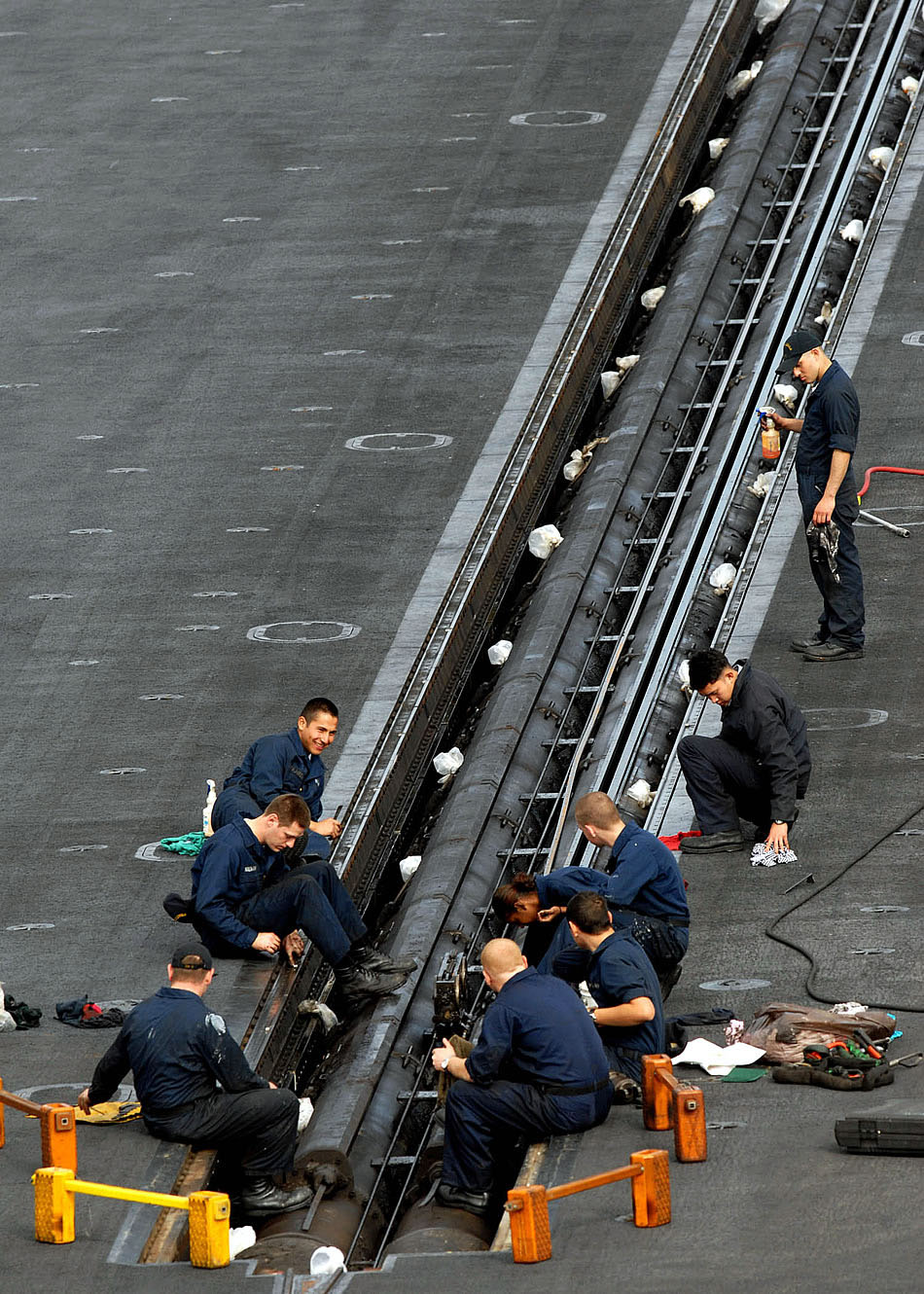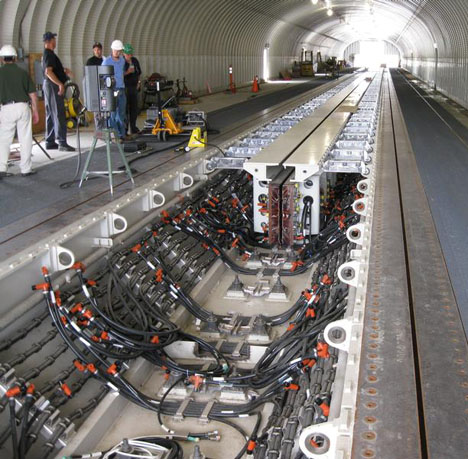Right on. People don't realise this stuff. My dad and his colleagues (60s and 70s kids) worked on research and development in superconductors for transport - maglev. This was back in the 90s. The groundwork was already established. Research take decades and despite the Shanghai maglev currently the only operational one in the world and has been for over a decade, the German technology that it uses a great deal of is and was utterly incomplete.
The problems not with the basic technology or working principle, rather then the USA military leadership and procurement process (not my opinion, but the viewpoint of the
)
Anyway, the EMALS was sold as cheap, short lead time development system, that require less weight ,space and manning (regards of operation and maintenance.)
This two picture will tell the issue of the EMALS and the advantage of steam :
The steam is at the end of several decades of improvement, the EMAL is at the beginning of the fielding.
Check the geometry of the two system, the steam designed to be insensitive of contamination/metal particles , next to impossible to jam/damage the steam catapult with a metal bolt dropped into the slot.
If an aircraft disintegrate on the field then after a low power test run it is safe with 99% confidence to operate the catapult.
Other hand , a bolt dropped into the EMAL then the electromagnetic field will pick it, move into the stator, and the rotor plate push it into the coils, damaging one or multiple of them.
Means if there is a crash-landing on the deck all EMALS catapult has to be disassembled and cleaned out prior of operation. And visibly it is not designed for that.
To make it even worst the EMAL units needs precise alignment, individually, most likely for stator replacement require tools and dockside environment, the steam has matured procedure how to do deep repairs on sea if needed.
So it is not the principle, but rather the original premise about "it will cure the cancer, covid and will extremely cheap on top of that ".
It is not that, most likely the final operational version will be bigger, heavier , require more maintenance and more personnel.
For the Chinese it doesn't matter, they will have to go through the learning curve, and the steam will be as painful for them like the EMALS.
Other hand the USA NAVY wasted the matured, stable system ,and blindly went into a several decade long development process, with early fielding, and risking to have useless carriers.
Just reminder, this happens in a motor if a metal ball ingester :
Of course the EMALS way more powerful than this small and slow motor : ), and it has a stator with very small airgap .


